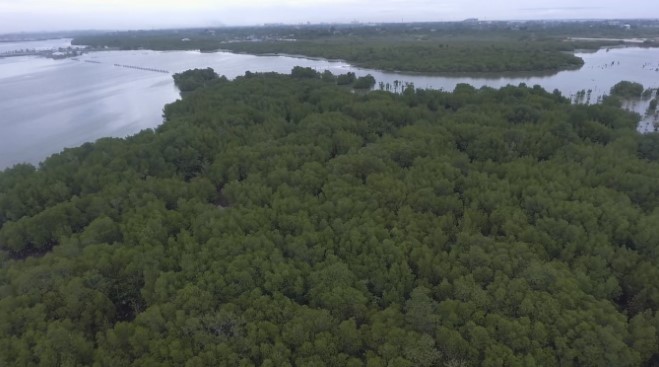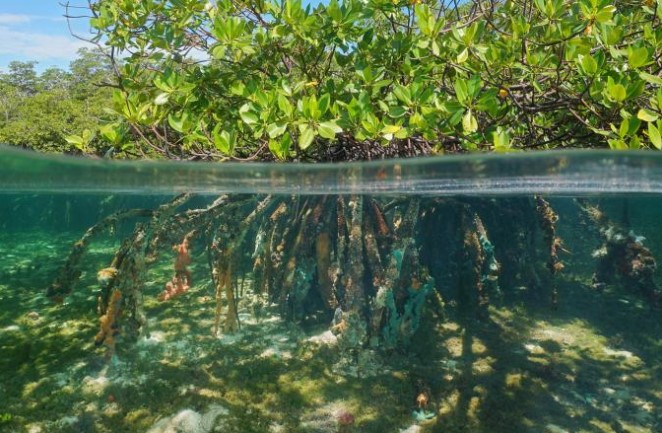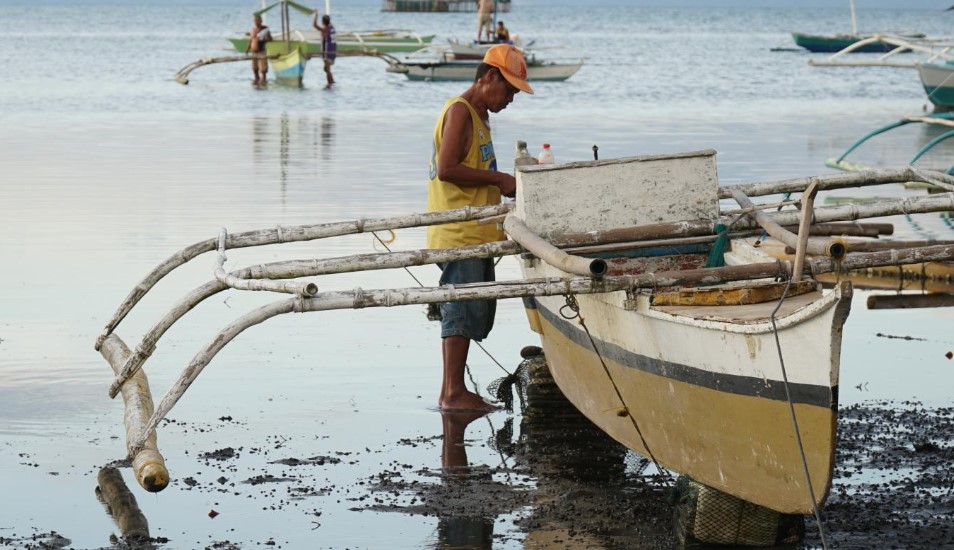A bridge for tomorrow
The Cebu-Cordova Link Expressway aims to deliver a bridge that sits gently in its environment.
The ocean has shaped life on Cebu and Cordova for generations, providing food, prosperity, and inspiration for the people who live there.
THE GEOGRAPHY OF the Philippines presents the engineer with daunting challenges. Human, economic, geographical and environmental factors all rightfully compete for the attention of planners and engineers alongside the practical challenges of building huge infrastructure projects like the Cebu-Cordova Link Expressway. Can a bridge really benefit both its citizens and protect the environment and habitats on which it is built? Can it become part of the natural world in which it lives or will it forever be an alien construct?
In a nation formed of about 7,460 islands, the sea is at the center of life in The Philippines. It plays a crucial role in the landscape, climate, economy, culture and food of an island people. However, the drive towards economic prosperity can easily unbalance this symbiotic relationship that lies at the core of a nation’s identity. Negotiating this challenge lies at the heart of an ambitious engineering project currently under construction in The Philippines.
The Cebu-Cordova Link Expressway (CCLEX) is an 8.5km bridge linking Cebu City and Cordova. Once completed it will be the longest bridge-way structure in the country. It aims to improve access to Mactan-Cebu International Airport and ease congestion along existing bridge crossings, providing a faster connection from Mactan Island to Cebu City and mainland Cebu for both business travelers and tourists.
Construction is at the halfway stage and the bridge is already beginning to dominate the landscape.
Preserving the mangrove forests
The bridge is being constructed in an area dominated by mangrove forests. As more research is carried out, it is becoming increasingly apparent the crucial role mangrove forests play in protecting low lying coastal areas from storm surges caused by typhoons, a particular plague the geography of The Philippines burdens its people with each year.

A longer route was chosen for the CCLEX in order to reduce the impact on the important mangrove forests of Mactan Island.
VIDEO STILL BY NAT GEO PARTNERS
The Cebu Cordova Link Expressway Corporation (CCLEC), along with its parent company, Metro Pacific Investments Corporation (MPIC) is also building a Mangrove Propagation and Information Center in Barangay Day-as, as part of its Shore It Up campaign.
It is also hoped the Mangrove Propagation and Information Center will aid efforts to grow ecotourism in the area. Similar initiatives in Pangasinan and Siargao by the Metro Pacific Investments Corporation have seen a successful boost in eco-tourist numbers in these regions. Locals have also found new economic opportunities as guides for tourists on river cruises and snorkelling trips in these regions.

Mangrove trees are an essential part of life in Cebu and Cordova. They help protect the island from typhoons and help protect young fish and other marine life that are essential to the region.
PHOTOGRAPH BY DAMSEA, SHUTTERSTOCK
Fast fact: Approximately 50% of mangroves in the Philippines have disappeared over the last century. (M. Spalding, M. Kainuma, L. Collins World Atlas of Mangroves. Earthscan, London 2010)
Mangroves also provide a vital function in the lifecycle of fish. Their unique, twisted structures provide the perfect refuge and nursery for juvenile fish helping them reach maturity and provide the fishermen of the region with a daily catch in the future.
Protecting a traditional way of life.
For centuries, fishing has provided the people of Cebu City and Cordova with a livelihood and sustenance, relying on the diverse marine ecosystems of the sea. The abundant coastal waters have provided such local delicacies as bakasi, threadfin bream and mackerel to local’s pots and fish markets. To help preserve this way of life, The CCLEX built a “fishermen’s bridge” close to the fishing village in Cordova as well as numerous smaller bridges at various intervals between the causeways, designed to allow the Banka, (traditional fishing boats) to pass. This additional clearance and channels were designed into the structure to give local fishermen and their boats access to their traditional fishing grounds.

Preserving access to fertile local fishing grounds ensures traditional fishing methods can continue to sustain families in modern day Cebu and Cordova.
PHOTOGRAPH BY CHRISONTOUR84, SHUTTERSTOCK
Shipping: The economic heartbeat of Cebu
Shipping plays a crucial role to the economy of Cebu City. It’s location at the center of the Philippines archipelago means it is home to the country’s busiest port as well as 80% of domestic shipping companies. It was critical to reduce the impact of the bridge and its construction to shipping passing through the Mactan channel.
“There will be no disruption of sea vessels passing through the channel,” stated Robert Uthwatt; COWI Project Manager.

Keeping shipping lanes open is a major consideration during construction of the CCLEX.
PHOTOGRAPH BY JOYFULL, SHUTTERSTOCK
Prior to the start of construction, the advanced sea vessel management practices such as traffic control, collision prevention and accident and emergency response plans were put in place.
When completed; the main bridge will stand at 51 meters (167 feet) above sea level, allowing large ocean-going vessels the room to pass underneath.
“The bridge is symbolic in many respects, it connects people, it connects cultures, it connects communities.” Rodrigo E. Franco President & CEO, Metro Pacific Tollways Corporation.
And much like the deck of the bridge will balance on nearly 500 supporting piles, the success of contemporary large infrastructure projects like this lies in finding the balance between opportunity and protection, between transformation and conservation. If a bridge can bring the populations of Cebu City and Cordova together as one community, if it can bring employment, economic prosperity and more tourist visitors to the region, can it also help those people protect the precious and irreplaceable habitats on which it is built? These are certainly lofty ambitions for a bridge, but the heart and soul of the project appear to be travelling in the right direction.
Source: National Geographic

